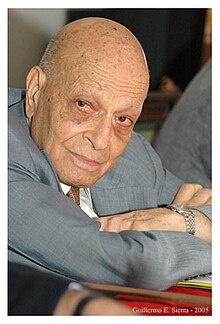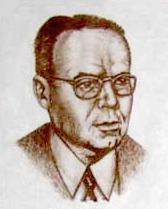
Otto Lyudvigovich Struve was a Russian-American astronomer of Baltic German origin. Otto was the descendant of famous astronomers of the Struve family; he was the son of Ludwig Struve, grandson of Otto Wilhelm von Struve and great-grandson of Friedrich Georg Wilhelm von Struve. He was also the nephew of Karl Hermann Struve.

Charles Dillon Perrine was an American astronomer at the Lick Observatory in California (1893-1909) who moved to Cordoba, Argentina to accept the position of Director of the Argentine National Observatory (1909-1936). The Cordoba Observatory under Perrine's direction made the first attempts to prove Einstein's theory of relativity by astronomical observation of the deflection of starlight near the Sun during the solar eclipse of October 10, 1912 in Cristina (Brazil), and the solar eclipse of August 21, 1914 at Feodosia, Crimea, Russian Empire. Rain in 1912 and clouds in 1914 prevented results.

William Joseph Hussey was an American astronomer.

The La Plata Astronomical Observatory is an observatory located in the city of La Plata, capital of the province of Buenos Aires, Argentina. Its IAU code is 839.
Struve is a surname. Notable people with the surname include:

The El Leoncito Astronomical Complex is an astronomical observatory in the San Juan Province of Argentina. CASLEO is one of two observatories located within El Leoncito National Park, which is in a part of the country which rarely sees cloud cover. The other facility in the park is the Carlos U. Cesco Astronomical Station of the Félix Aguilar Observatory. CASLEO was established in 1983 by an agreement between National Scientific and Technical Research Council (CONICET) of Argentina, the Ministry of Science, Technology and Innovation (MINCYT) of Argentina, the National University of San Juan (UNSJ), the National University of La Plata (UNLP), and the National University of Córdoba (UNC). The facility was dedicated in 1986 and regular observations began in 1987.

Virpi Sinikka Niemelä was a leading Finnish Argentine astronomer. She was the second Argentine to be elected for Associate of the Royal Astronomical Society.
1608 Muñoz, provisional designation 1951 RZ, is a Flora asteroid from the inner regions of the asteroid belt, approximately 6.5 kilometers in diameter. It was discovered on 1 September 1951, by Argentine astronomer Miguel Itzigsohn at the La Plata Astronomical Observatory, in La Plata, Argentina. The S-type asteroid has a rotation period of 5.3 hours. It was named after F. A. Muñoz, one of the assistant astronomers at the discovering observatory.

The Argentine National Observatory, today the Astronomical Observatory of Córdoba, was founded on 24 October 1871, by Argentine president Domingo F. Sarmiento and the North American astronomer Benjamin Apthorp Gould.
The Struve–Sahade effect occurs in a double-lined spectroscopic binary star system when the strength of the spectral lines of the components varies during the orbital motion.
The Instituto de Astronomía Teórica y Experimental (IATE) is a scientific institute funded by the Consejo Nacional de Investigaciones en Científicas y Técnicas (CONICET) and the Universidad Nacional de Córdoba (UNC), located in the city of Córdoba, Argentina, and dedicated to the study of different topics in astronomy. The headquarters of the institute are located at the Observatorio Astronómico de Córdoba.

The Argentine Institute of Radio Astronomy (IAR) was created in 1962 through an agreement between the scientific agencies CONICET and CIC, and the universities of La Plata and Buenos Aires. Its functions are to promote and coordinate the research and technical development of radio astronomy in Argentina and to collaborate in the teaching and dissemination of astrophysics and related disciplines. The Institute continues its activities in the dependency of the National Council of Scientific and Technical Research (CONICET), the Commission of Scientific Research of the Province of Buenos Aires (CICPBA) and the National University of La Plata (UNLP). Its current director is Dr. Gustavo E. Romero and its deputy director, Dr. Jorge A. Combi.

TU Muscae, also known as HD100213, is an eclipsing binary star in the constellation Musca. Its apparent magnitude ranges from 8.17 to 8.75 over around 1.4 days.
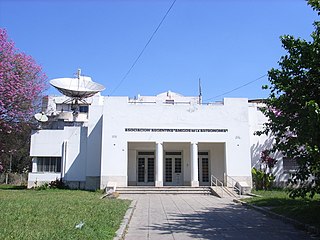
Asociación Argentina Amigos de la Astronomía is an amateur astronomy civil association based on Buenos Aires, Argentina, with the aim of spreading astronomy. It was founded on January 4, 1929 and its field courses are held on related subjects, research in collaboration with professional bodies and printed publications or multimedia, and recreational activities for the general public. The main-belt asteroid 4756 Asaramas was named in honor of the observatory.

Delta Lyrae cluster or Stephenson 1 is a sparse open cluster of stars located about 1,220 light years away in the northern constellation of Lyra. Centered on the bright star Delta2 Lyrae for which it is named but not a member like Delta1 Lyrae is with 70% certainty.

Adela Emilia Ringuelet was an Argentine astrophysicist and astronomer at the Félix Aguilar Observatory in Argentina.

Gloria Dubner is an Argentinian astrophysicist and Director of the Instituto de Astronomía y Física del Espacio in Buenos Aires and a Senior Researcher at the National Scientific and Technical Research Council. She is known for her research on supernovas.
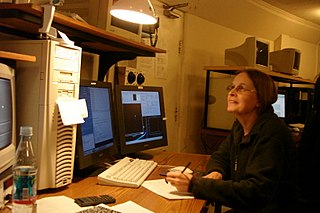
Nidia Irene Morrell is an Argentine astronomer who is a permanent staff member at the Las Campanas Observatory in La Serena, Chile. She was a member of the Massive Stars research group led by Virpi Niemelä and the Hubble Heritage Project. Professionally, she is known for her numerous contributions related to the astrophysics of massive stars. She participates in the systematic search for variations of brightness in stellar objects, including the observation of a candidate for the Thorne–Żytkow object. She was also a member of the team that discovered the supernova ASASSN-15lh.
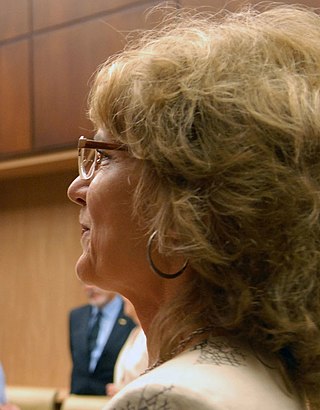
Marta Graciela Rovira is an Argentine astrophysics researcher and was first woman to be named president of CONICET, the government agency that directs and coordinates most of the academic research performed in universities and institutes throughout the country.
